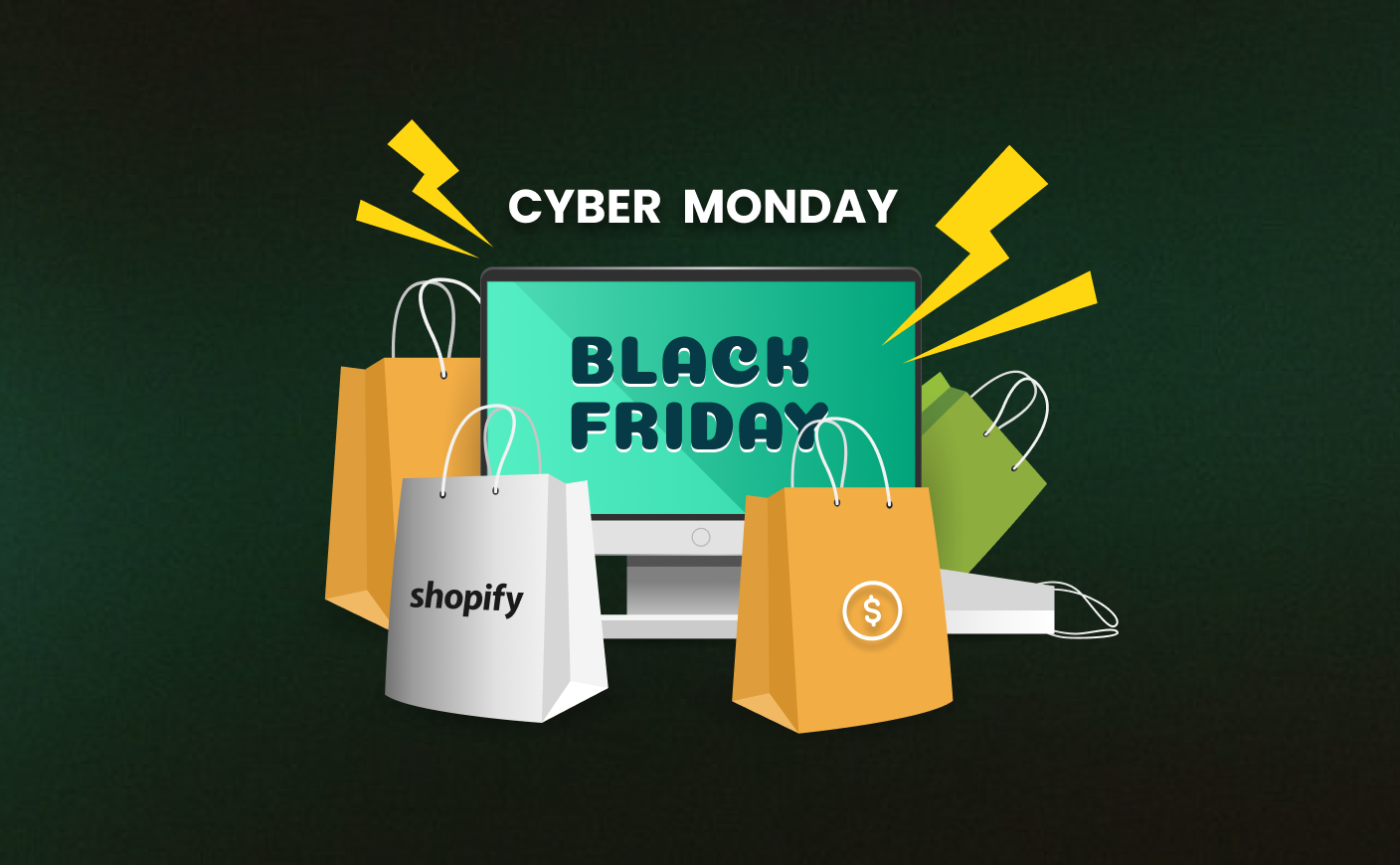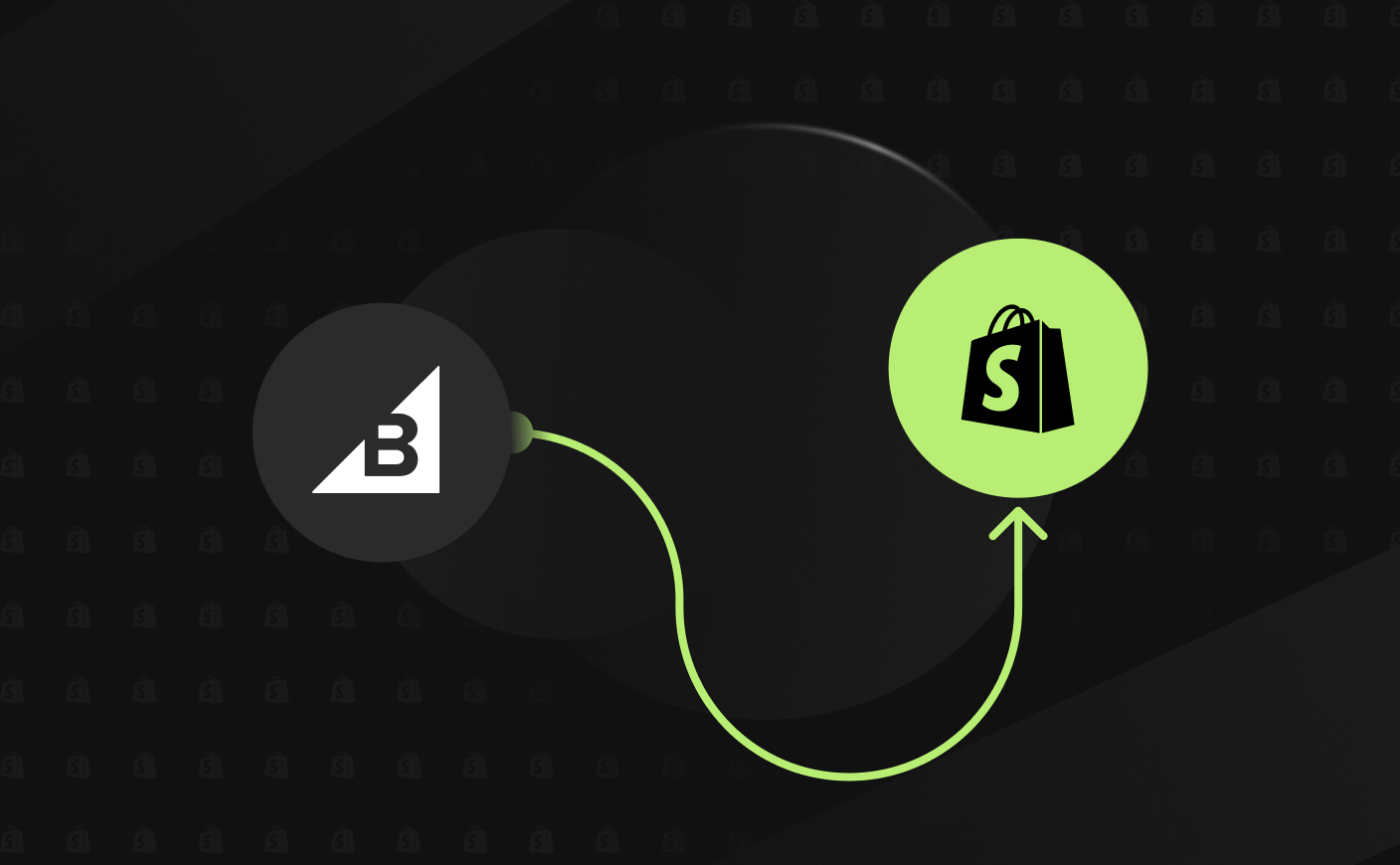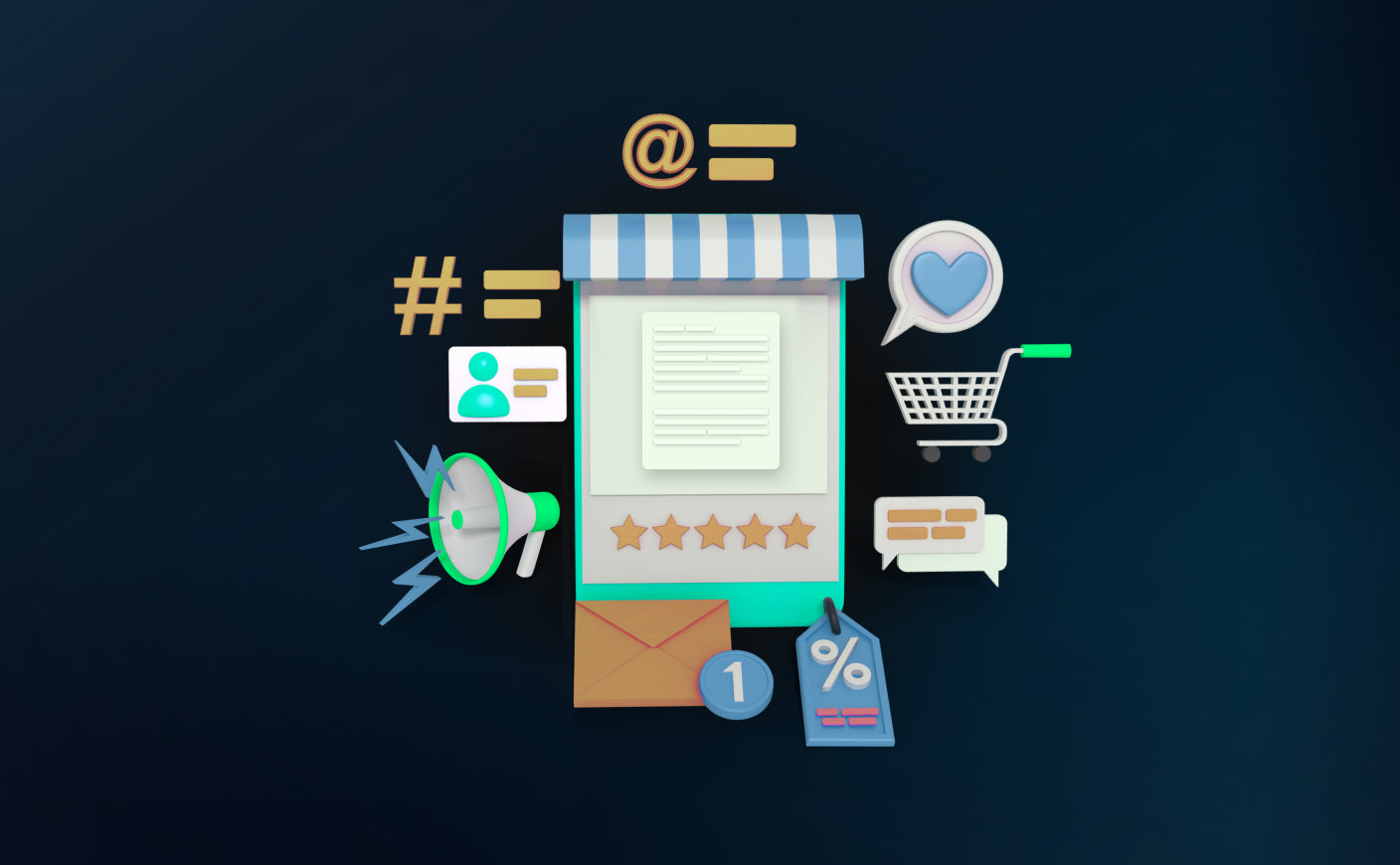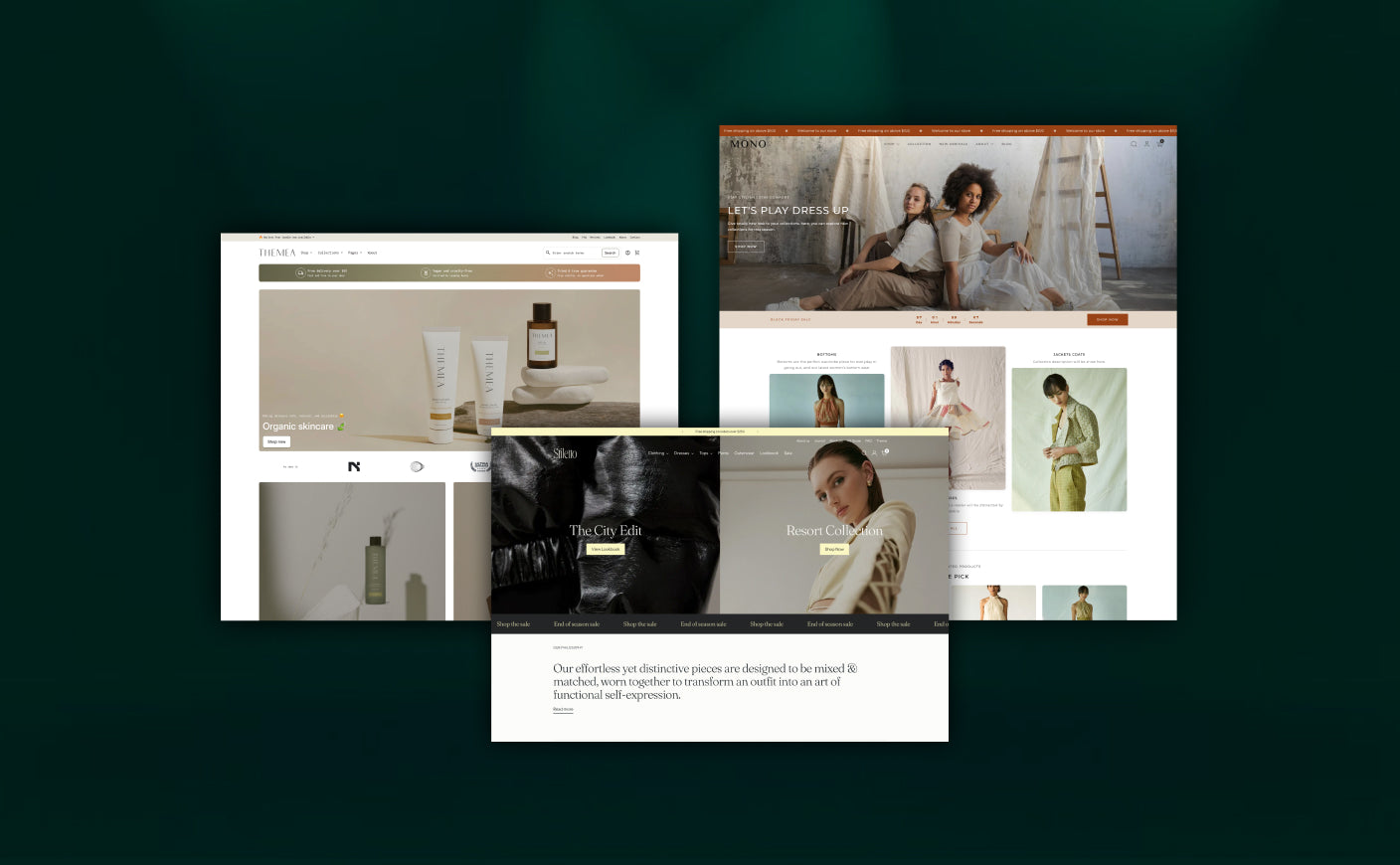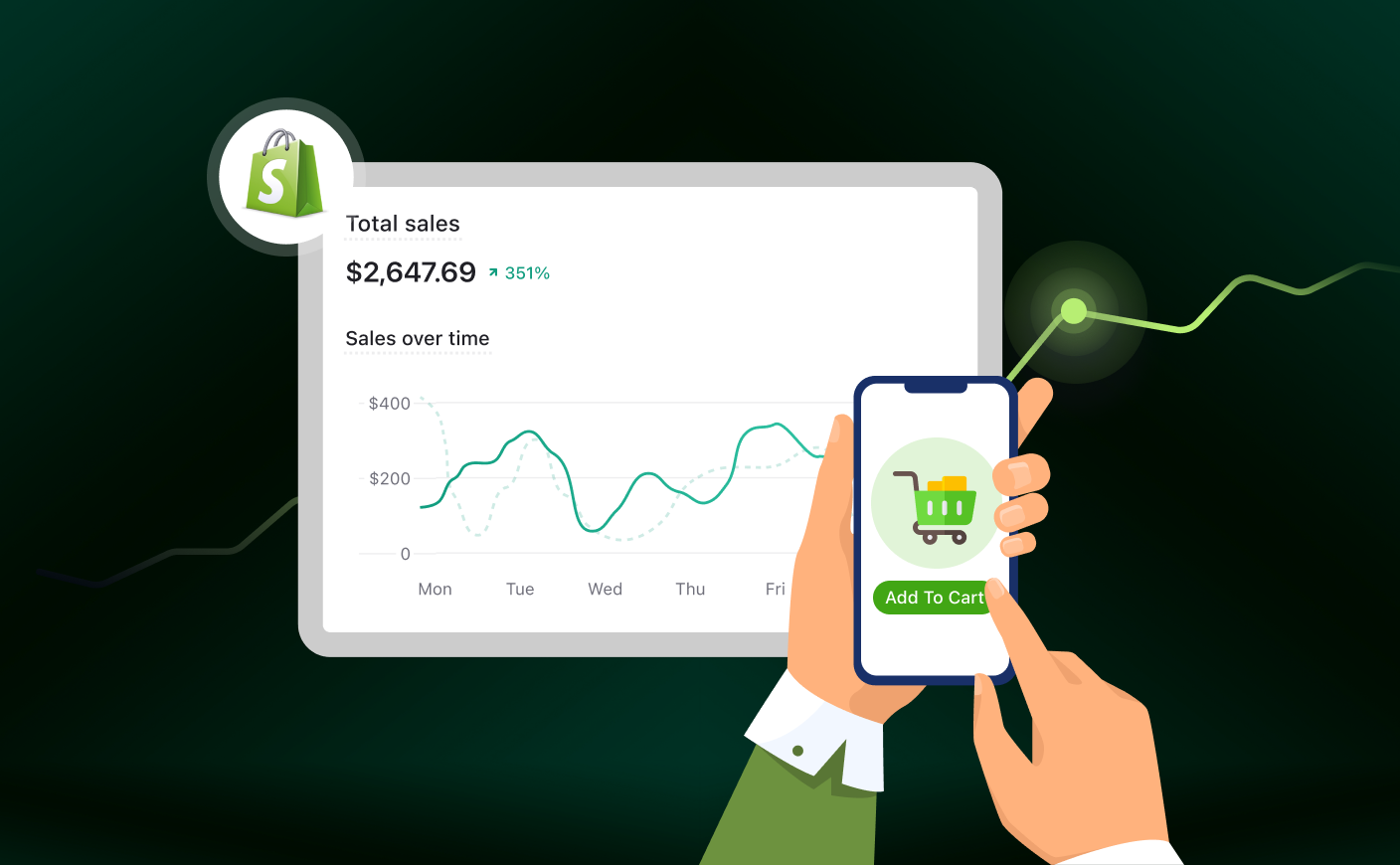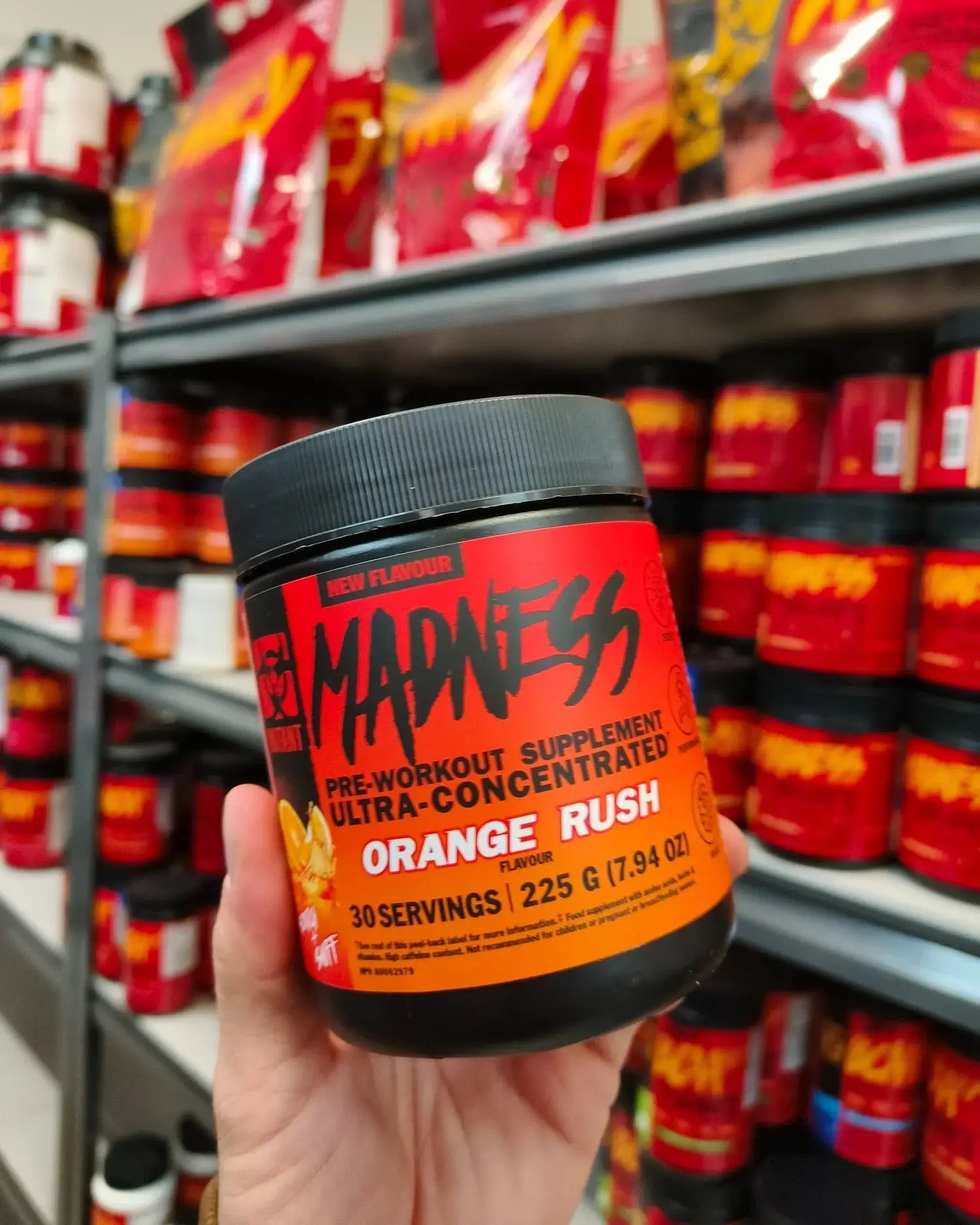Custom Integrations a Shopify Plus Development Agency Can Build
Custom Integrations
Shopify Plus
Shopify Plus Development Agency

Running an enterprise level ecommerce brand is no easy task..
Because the current scenario does not just demand a great product or a stunning storefront - you need something that can keep your operations running smoothly without hurting customer experience.
If your store is already on Shopify Plus - you are well aware of its potential and flexibility to scale.
But here’s the real deal - to leverage this platform, you need more than just plug-and-play apps. You need custom integrations that are built around your business - not the other way around.
And that is exactly what we are here to talk about.
This blog is for the people steering the ship - ecommerce directors, CTOs, CEOs, and operations leaders who are constantly asking: How do we do this better? Smarter? Faster? If that’s you, then you’re in the right place.
We’re going to explore the world of custom integrations for Shopify Plus, and why partnering with the right Shopify plus development agency can make all the difference.
But first let’s cover our basics.
The Importance of Custom Integrations & Hiring A Shopify Plus Development Agency
Shopify Plus is not just a bigger and expensive version of Shopify. It is an entirely different ballgame - a platform specially designed for businesses growing quickly and growing at a large scale.
We’re talking about businesses pulling in $1M to $500M+ annually. If that’s you, you’re probably already dealing with complex systems - ERPs, CRMs, inventory management tools, marketing platforms - trying to get them all to play nicely with your store. Shopify Plus makes that possible.
It’s fast. It’s reliable. And most importantly, it’s built to integrate.
So why do you need custom integrations if the platform is literally the best for any big brands?
Because off-the-shelf apps can only take you so far.
They’re great when you’re just getting started. But as you scale, those solutions start to feel… limiting. You need systems that talk to each other. Processes that just work. A tech setup that fits your business like a glove - not something that forces you to compromise.
This is where you need help with custom integrations.
They’re not just about making things work. They’re about making things work better. When done right, these integrations can:
- Automate operations and free up your team’s time for more strategic work.
- Create experiences that feel effortless and intuitive for your customers.
- Increase revenue by removing friction and making every part of the buyer journey smarter and more efficient.
And the best part is these integrations are built around your business. Your tools. Your workflows. Your goals.
Now, comes the part that brings it all together.
Even if you have a brilliant internal team, custom integrations on Shopify Plus require a unique blend of technical expertise, ecommerce strategy, and platform-specific experience.
That’s where partnering with a Shopify Plus development agency really starts to pay off.
Here’s why:
Deep Expertise in Shopify’s Ecosystem - From mastering Liquid (Shopify’s templating language) to working with modern frameworks like React and Node.js, an agency knows how to build solutions that work and scale beautifully.
API Integration Know-How - Shopify Plus offers extensive API capabilities, but tapping into them effectively takes experience. A good agency understands the ins and outs of Shopify’s APIs, how to work with third-party systems, and how to create real-time, reliable connections across your entire stack.
Proven Track Record with Enterprise Brands - You want results, not experiments. The right agency brings a portfolio of successful projects and revenue-driving integrations for enterprise clients. They’ve seen what works, what doesn’t, and how to avoid costly missteps.
Access to a Full-Service Team - It’s not just about development. You also get certified Shopify developers, UX/UI designers, integration architects, and strategic consultants - all under one roof. That means you are getting custom integrations that are perfectly aligned with your business goals.
Ongoing Support & Optimization - Launching the integration is only step one. A top-tier agency continues to monitor, support, and optimize your setup over time.
Also read: How to leverage Shopify’s API for custom integrations
Types of Custom Integrations a Shopify Plus Development Agency Can Build
Let’s explore the most impactful types of integrations, what they do, and how brands are using them to win big.
#1 ERP Integrations

As your business scales, keeping everything in sync - your inventory, orders, financials, and fulfillment - can start to feel like spinning plates. And the more channels you sell through, the more complicated it gets.
This is where an ERP integration can help you.
An ERP system acts like a digital brain, consolidating all critical operations - from inventory and procurement to accounting and customer data - into one centralized platform.
Some popular ERP platforms include:
- NetSuite – A favorite among high-growth DTC and retail brands thanks to its scalability and deep reporting features
- Microsoft Dynamics 365 – Ideal for enterprise companies with complex sales and financial operations
- SAP – Often the choice for legacy enterprises and manufacturers with global supply chains
Now that you have an overall understanding of ERPs, let’s discuss their importance in great detail.
Real-time Inventory Syncing: When a customer places an order on your Shopify store, your ERP updates instantly - no lag, no overselling. This is crucial for businesses with limited stock or high-demand product drops.
Automated Order Processing: Instead of manually pushing orders from Shopify into your accounting or fulfillment system, everything flows automatically. Invoicing, shipping labels, and even tax calculations can be handled in real-time.
Simplified Financial Reporting: Whether you're running one Shopify store or managing multiple brands across regions, an ERP integration gives you a consolidated view of revenue, costs, and profitability. This is critical for accurate forecasting and investor reporting.
Case Study: Allbirds

Let’s look at Allbirds, the wildly popular sustainable footwear brand known for its minimalist design and eco-friendly mission.
As Allbirds expanded internationally and opened brick-and-mortar locations, managing inventory and order data across multiple Shopify stores and sales channels became increasingly complex. Manually syncing orders and reconciling inventory in spreadsheets just wasn’t cutting it anymore - and errors were becoming costly.
That’s when they brought in a Shopify Plus development agency to build a custom integration with NetSuite ERP.
This integration allowed Allbirds to:
- Automatically sync inventory levels in real-time across global warehouses and retail locations
- Route orders based on geography and warehouse availability
- Generate accurate financial reports that accounted for taxes, duties, and regional pricing differences
The result was a 20% reduction in operational overhead. More importantly, their team could focus on strategic growth - like launching in new countries and expanding product lines - instead of drowning in manual data entry and inventory corrections.
#2 CRM Integrations

As mentioned in the beginning of the blog, customers today are not just looking for a great product. They are looking for an experience - that is specially curated for them.
A CRM (Customer Relationship Management) integration helps you with just that.
This platform does not just help you with keeping track of customer names and emails. It helps you to turn every interaction - whether it’s a click, a purchase, or a support ticket - into meaningful, revenue-driving communication.
The right CRM integration will help you to:
Unify customer profiles so your marketing, sales, and support teams are always on the same page
Automate marketing flows based on real-time behavior—like cart abandonment, repeat purchases, or even product views
Drive loyalty and retention, not just acquisition, by tailoring communication based on purchase frequency, order value, or loyalty tier
Here are some of the popular CRM platforms for merchants:
- Salesforce – Great for enterprise-level CRM with robust automation and B2B features.
- HubSpot – Known for its user-friendly interface and strong content + inbound marketing capabilities.
- Klaviyo – The go-to for DTC brands focused on email and SMS marketing, thanks to its native Shopify Plus integration and intuitive segmentation tools.
Case Study: Drunk Elephant

Take Drunk Elephant, a clean skincare brand with a cult following. As they scaled, they knew they needed to go beyond batch-and-blast marketing. So they partnered with a Shopify Plus agency to integrate Klaviyo with their Shopify store.
With Klaviyo in place, they set up automated flows triggered by browsing behavior (like looking at a specific product multiple times), past purchases (like replenishment reminders for a cleanser after 30 days), and even customer milestones (like birthdays or VIP tier achievements).
Each message felt personal - because it was driven by real data.
The result was a 15% increase in Customer Lifetime Value (CLV), all thanks to more relevant communication and stronger emotional connections with their audience.
And the best part? It was scalable. Whether a customer made one purchase or ten, the system knew exactly how to treat them.
#3 PIM Integrations

A PIM (Product Information Management) integration helps you to keep your product data consistent, clean, and accurate across multiple storefronts, channels, and regions.
To put in simple words, if your team updates a product once - that particular update is reflected everywhere it’s being sold. Thus it not only brings convenience but also accuracy, speed, and builds trust in your brand’s experience.
Some of the key benefits of a PIM integration includes:
Simplified Catalog Management - Manage product catalogs across multiple Shopify storefronts, sales channels, and languages - without copy-pasting or second-guessing which data is the latest.
Faster Time-to-Market - Launch new products or seasonal collections faster by making bulk updates and pushing live content with just a few clicks.
Improved SEO Performance - Rich, structured data means your product pages are more informative, easier to crawl by search engines, and more likely to rank for relevant keywords thus driving organic traffic that converts.
Consistency Everywhere - Whether a customer is shopping on your website, a mobile app, or a third-party marketplace, they get the same accurate, beautifully presented product information.
Here are some of the popular PIM platforms for Shopify Plus brands:
- Akeneo – great for global brands with complex localization needs
- Plytix – ideal for smaller teams looking for simplicity and affordability
- Salsify – powerful, enterprise-grade solution perfect for omnichannel retailers
These platforms don’t just store product data - they structure it. We are talking about SKUs, descriptions, images, materials, sizing, localized language versions, SEO metadata, and even compliance documentation - all in one place, organized and ready to go.
Case Study: Crocs

Crocs, the global footwear brand with a presence in dozens of countries and a product catalog that includes countless styles, sizes, and collaborations. Managing that scale manually would be a nightmare.
By integrating Salsify with Shopify Plus, Crocs streamlined the way they organize and publish product content across their global channels. This integration allowed them to ensure that every product - whether it was launching in the US, Germany, or Japan - had the correct description, specs, and localized imagery.
The impact was a 10% increase in product page conversions. That may not sound massive at first glance, but for a brand operating at Crocs’ scale, it translates to millions in additional revenue - just by presenting product information more clearly and consistently.
Also read: The real reason US luxury brands trust Shopify Plus in 2025
#4 Payment Gateway Integrations

In an ecommerce business, the checkout process is literally the making or breaking point of business. After doing all the hard work - from attracting customers, guiding them through your site, convincing them to add products to their cart - a slow payment method can ruin your entire game.
That’s why integrating the right payment gateways is absolutely essential.
A Shopify Plus development agency will help you to choose the right gateway for a fast, secure, and localized checkout experience. They give your customers the experience to pay how they want, where they want, without second-guessing the process.
Let’s take a look at some of the key benefits of integrating the right payment gateway:
Global Payment Flexibility - With integrations that support wallets like Apple Pay, Google Pay, Shop Pay, and even region-specific methods like iDEAL or Sofort, customers get to choose how they pay. This is huge for conversion - especially in markets with unique payment preferences.
Fewer Abandoned Carts - No one likes to fill in their credit card details for the tenth time. Integrations like Shop Pay allow for one-click checkouts that remember returning users - making the process lightning-fast and frustration-free.
Stronger Security & Compliance - With PCI-compliant integrations and fraud prevention features built-in, you’re not just protecting your customers - you’re safeguarding your brand reputation too.
Some of the popular platforms include:
- Stripe – Known for its developer-friendly APIs and global reach
- PayPal – A must-have for buyers who prioritize brand recognition and protection
- Adyen – Ideal for international merchants needing multi-currency and local payment support
- Custom tokenized payment systems – For brands needing highly tailored, secure checkout flows
Case Study: Gymshark

Gymshark is a massively successful UK-based activewear brand - a perfect example of what payment gateway optimization can do.
As this company expanded globally, they faced a challenge familiar to many fast-scaling brands: international traffic was booming, but cart abandonment rates were stubbornly high — especially on mobile.
Their solution? A fully integrated Shop Pay experience tailored to their growing mobile audience. By offering a fast, secure, and familiar payment option, Gymshark reduced the number of steps it took to complete a purchase and drastically cut down on form fills.
The result?
- 12% increase in Average Order Value (AOV)
- A noticeable drop in cart abandonment rates, particularly in mobile-dominant markets like the U.S. and Australia
- More repeat purchases, thanks to Shop Pay’s secure customer memory feature
And this wasn’t just a technical improvement - it transformed how customers felt at checkout: smoother, faster, and more trustworthy.
Also read: Shopify payments vs third-party gateways
#5 Shipping and Fulfillment Integrations

Getting your product into customers’ hands should feel like clockwork - but as your business scales, logistics can quickly become a major issue. Whether you’re managing multiple warehouses, offering same-day delivery, or shipping internationally, keeping everything in sync is no walk in the park.
That’s where custom shipping and fulfillment integrations come into the picture.
The goal is simple: streamline your entire fulfillment process - from checkout to doorstep - while giving your customers a smooth, predictable delivery experience.
Custom integrations connect your Shopify Plus store with your fulfillment ecosystem in real-time, making logistics feel smooth.
Some of the key benefits of custom shipping and fulfillment integrations are:
Real-time shipping rates and live tracking - Customers see accurate shipping options at checkout, improving trust and reducing friction. On the backend, you’re automatically selecting the most cost-efficient carrier for every shipment.
Multi-warehouse automation - Fulfill orders from the warehouse closest to your customer. No more manual sorting or second-guessing - smart routing handles it for you.
Faster, more accurate deliveries - When everything’s connected and automated, fulfillment errors drop, and delivery times improve.
Popular platforms include:
- ShipStation – for powerful shipping label automation and routing
- EasyPost – for accessing real-time shipping rates across carriers
- ShipBob (3PL) – for outsourced fulfillment with nationwide (or even global) reach
Case Study: Kith

Take Kith, the premium streetwear brand known for its limited drops and high demand. With both physical retail stores and a high-volume ecommerce presence, they needed a fulfillment system that could keep up with a loyal (and impatient) fanbase.
They partnered with a Shopify Plus development agency to integrate ShipStation directly into their Shopify Plus backend. This allowed real-time syncing between their online orders and warehouse operations.
Orders were routed smartly - if a product was available in multiple locations, the system automatically picked the closest warehouse to the customer, cutting down on shipping time and cost.
By connecting ShipStation’s automation tools with Shopify’s order and inventory data, Kith saw an immediate impact:
- Shipping errors dropped by 30%, thanks to automated workflows replacing manual data entry.
- They fulfilled orders faster - without having to grow their operations team.
- Most importantly, they delivered a consistently smooth experience to their customers, which is crucial in the hype-driven streetwear world.
#6 Marketing Automation Integration

Marketing today is so much more about just running a few ads and blasting emails - it is about understanding your customer deeply and speaking to them at the right moment, with the right message, on the right channel.
A marketing automation integration helps you to do that.
If you are on Shopify Plus, you have a heavy flow of customer data. In the absence of the right tools to use that data - you will experience missed conversions, low repeat rates, and wasted ad spend.
That’s why partnering with a Shopify Plus development agency to integrate marketing automation tools can be a real turning point.
Some of the popular tools are:
- Mailchimp - It helps brands automate email and multi-channel campaigns with ease. Its robust segmentation ensures your messages land with the right audience at the right time.
- Omnisend - Designed for ecommerce, Omnisend offers email, SMS, and automation workflows tailored to customer behavior. It’s ideal for brands that want personalization without the heavy lifting.
- Google Ads - Integrating Google Ads with Shopify Plus helps you to experience smarter, data-driven campaigns.
- Shopify Audiences - Exclusively for Shopify Plus merchants, this tool creates custom lookalike audiences based on real shopping behavior. It helps lower customer acquisition costs by reaching buyers who are ready to convert.
Here’s how marketing automation integrations help Shopify Plus merchants scale:
Behavior-based personalization: Whether it’s through Omnisend or Klaviyo, you can segment users by browsing history, purchase behavior, location, or even lifetime value - and deliver hyper-relevant messages that convert.
Smarter paid advertising: Tools like Google Ads integrated directly with Shopify Plus enable brands to retarget effectively, optimize spend, and reduce cost-per-click by only reaching the right audiences.
Full-funnel visibility: Integrations with platforms like Shopify Audiences help you track what’s working and what’s not, from first click to repeat purchase - so your next campaign can be even more efficient.
Case Study: Olaplex

Olaplex, the premium haircare brand that’s beloved by both stylists and self-care enthusiasts, was already enjoying strong DTC sales through their Shopify Plus store. But they knew they were leaving money on the table when it came to nurturing customer relationships and scaling paid campaigns.
By integrating Omnisend and Google Ads with Shopify Plus, they took their marketing to a new level. Every customer interaction - from browsing to buying - fed into a personalized marketing engine. New visitors received targeted welcome sequences, cart abandoners were re-engaged with time-sensitive offers, and loyal customers received early access to product drops and exclusive content.
But the real magic was in the numbers.
During peak campaign seasons - Black Friday or holiday sales - Olaplex saw a staggering 235% increase in conversion rates. Not just more traffic, but more qualified, engaged, and ready-to-buy customers.
#7 Subscription and Loyalty Program Integrations

In today’s time when everything is constantly changing and new trends are rapidly evolving, one sure shot way for brands to retain their customers is through - subscription and loyalty programs.
Whether you're in wellness, food, fashion, or beauty, giving your customers an easy, rewarding reason to stick around (and keep buying) builds predictable revenue and a more loyal customer base.
Here’s why subscription and loyalty programs matter for any ecommerce business:
- Customers never have to worry about running out of their favorite products—whether it’s skincare, pet food, supplements, or snacks.
- Subscriptions help stabilize cash flow and make forecasting easier, especially for DTC businesses.
- When paired with loyalty programs—like reward points, milestone perks, or birthday discounts—subscriptions turn one-time buyers into repeat customers.
- Loyalty incentives like exclusive access, early launches, or free gifts help create an emotional connection and build community around your brand.
Some popular platforms to integrate includes:
- Recharge for powerful, customizable subscription logic
- Yotpo to run rich loyalty and referral programs
- Submarine for highly tailored subscription models and post-purchase flows
Also read: Boost retention with Shopify Plus loyalty and personalization
Case Study: Hims & Hers

Take Hims & Hers, a wellness brand that absolutely nailed its subscription strategy. They needed a flexible solution that would let customers choose how often they wanted products delivered - every month, every other month, or even quarterly. With Recharge as their base platform and custom development layered on top, they were able to offer dynamic subscription options that adapted to each customer’s preferences.
But they didn’t stop there. They integrated personalized triggers through Shopify Flow - so a customer who reached their six-month mark received bonus loyalty points and a special upgrade offer. These little touches made the experience feel exclusive and thoughtful, not transactional.
The result? Over $10 million in recurring revenue annually, significantly lower churn, and higher customer lifetime value.
#8 Headless Commerce Integrations

A headless commerce basically decouples your front-end (what your customers see and interact with) from the back-end (where your business logic, product data, checkout, etc., live).
This allows for much more freedom when it comes to building custom user experiences that load faster, look sharper, and convert better - especially on mobile.
Key benefits of headless commerce includes:
Faster Load Times: In the age of mobile-first shopping, milliseconds matter. A faster front end means reduced bounce rates and higher conversion rates.
Design Freedom: You're no longer limited to Shopify’s templating engine (Liquid). Instead, you can create immersive, brand-forward experiences tailored to your audience.
Scalability Across Markets: With headless architecture, expanding globally or managing multiple channels becomes more streamlined. You can localize experiences, adjust front-end logic per region, and plug in new services without reworking your entire store.
Popular tools & technologies:
- Next.js (for blazing-fast React front ends)
- Sanity CMS or Contentful (for flexible content management)
- Custom React/Node.js stacks integrated with Shopify’s Storefront API
Case Study: Allbirds

Allbirds is well known for its minimalist style and sustainability-first mission. As their customer base and product catalog grew, so did the need for a faster, more dynamic shopping experience that aligned with their brand identity.
Instead of sticking with a traditional Shopify theme, Allbirds partnered with a Shopify Plus development team to go fully headless. They used Next.js to build a fast React-powered front end and tapped into Shopify’s Storefront API to keep the ecommerce engine running in the background.
This move allowed them to completely control the user experience - from page transitions and animations to product filtering and storytelling components - without the limitations of pre-built themes.
And it brought pretty incredible results.
They saw a 50% increase in mobile conversions after launching their headless site. Load times dropped significantly, their mobile UX improved drastically, and they were able to deliver a sleek, fast, and on-brand experience that felt as premium as their product.
Also read: Shopify headless commerce vs traditional commerce
#9 Omnichannel and POS Integrations

Shopping has changed. It's no longer about choosing between online and in-store - it’s about both. And if your systems can’t keep up with that expectation, you’re likely losing both revenue and customer trust.
This is where omnichannel and POS (Point of Sale) integrations come into play.
In addition to making things run smoothly behind the scenes, they create a connected, frictionless journey for your customers and your team.
In simple words, the primary goal of this integration is to unify your physical and digital storefronts in real time, across all channels.
These are the tools that make it happen:
- Shopify POS - The go-to solution for Shopify Plus merchants, offering native integration with your online store for easy data syncing across channels.
- Square POS - A solid option for small to mid-sized retailers, known for its ease of use and reliable reporting capabilities.
- Custom Dashboards - Ideal for enterprise brands that need tailored analytics, staff performance tracking, and centralized control over multiple store locations.
The key benefits include:
Real-Time Inventory and Sales Sync - Prevent overselling and ensure customers see accurate stock levels both online and in-store.
Smarter In-Store Experiences - Equip staff with mobile POS devices to check inventory, process payments, access order history, and offer personalized recommendations.
Unified Customer Data - Maintain a single source of truth for each customer, enabling personalized service across all touchpoints.
Global Commerce Ready - Handle multiple currencies, regional tax settings, and localized preferences easily to support international operations.
Streamlined Returns and Exchanges - Allow customers to return or exchange purchases across channels—buy online, return in-store, and vice versa.
Scalable Infrastructure - Integrations grow with your business, supporting everything from pop-ups to multi-location global rollouts without system slowdowns.
Case Study: Parachute

Take Parachute, the modern home essentials brand known for their high-quality bedding and minimalist aesthetic. As their retail presence grew, they faced the challenge of connecting their expanding network of physical stores with their already successful online platform.
They turned to Shopify POS, fully integrating it with their Shopify Plus backend. This gave them one centralized system that did it all: syncing online and in-store inventory, allowing staff to access customer profiles, processing returns from any channel, and providing unified analytics across the board.
What’s more, this setup helped them discover a key growth opportunity. Customers who interacted with both their online and physical stores turned out to be their most valuable audience.
Thanks to a consistent and convenient experience across touchpoints, Parachute saw a 20% increase in total revenue from these omnichannel shoppers alone.
How to Choose the Right Shopify Plus Development Agency For Custom Integrations
If you’ve made it this far, you probably understand just how critical custom integrations can be to scaling your Shopify Plus store. But the catch is : none of this works without the right development partner by your side.
Choosing the right Shopify Plus development agency is not just a technical decision - it’s a strategic one.
Because you’re not just hiring a team to build features; you’re investing in a partner that can help you grow, adapt, and lead in your space.
So, how do you find that agency? What should you look for? And what are the warning signs to steer clear of?
Let’s break it down.
Key Criteria for Selection
When evaluating potential partners, there are a few non-negotiables that should be at the top of your list:
Expertise in Shopify Plus & Enterprise Integrations
Make sure to choose an agency that is certified Shopify Plus Partners. That certification signals deep platform knowledge and proven success with large-scale projects.
Ideally, you want a team fluent in Shopify’s Liquid code, with hands-on experience integrating complex systems like ERPs, PIMs, and headless frameworks.
A Strong Portfolio of Revenue-Generating Work
Ask for case studies that go beyond design and development. Look for evidence of measurable business impact - whether that’s a brand that grew from $10M to $100M, or a 200% increase in operational efficiency post-integration.
Clear, Agile Processes and Project Transparency
A reliable agency will have a defined methodology. That includes agile sprints, regular checkpoints, clear scopes of work, and timelines you can actually trust.
Ongoing Support and Optimization
Your agency should offer 24/7 technical assistance, performance monitoring, and proactive recommendations as your business scales or shifts direction. You need a team that grows with you, not just delivers a one-and-done build.
Smart Questions to Ask Before You Commit
It’s easy to be dazzled by a slick sales pitch or a beautiful portfolio, but these questions will help you separate true experts from the rest:
What experience do you have with [insert specific integration]?
Whether it’s NetSuite, Salesforce, Recharge, or a headless React stack, get specific. You want confidence that they’ve done this before—and done it well.
Can you share case studies showing ROI or revenue impact for brands like ours?
Great work leaves a paper trail. Ask to see metrics and business outcomes, not just design screenshots.
What would a typical timeline and budget look like for a project like ours?
This gives you insight into how well they scope and estimate - and whether they understand the complexity of your needs.
How do you ensure performance and scalability during high-traffic events?
Black Friday, product drops, influencer campaigns—you want to know your site will stay rock-solid when traffic spikes.
What does your post-launch support look like?
Your relationship shouldn’t end when the site goes live. Ensure there’s a roadmap for ongoing collaboration.
Red Flags to Watch Out For
Even experienced brands can fall into the trap of hiring the wrong agency. Here are some warning signs that should raise eyebrows:
No Shopify Plus Certification
If they’re not certified, proceed with caution. Enterprise builds are a different ballgame, and you don’t want to be someone’s learning experience.
Reliance on Off-the-Shelf Apps for Complex Needs
While third-party apps have their place, an over-dependence on them often leads to a bloated tech stack, limited customization, and long-term maintenance headaches.
Vague Timelines or Poor Communication
If you're getting generic timelines ("it'll take about 2-3 months") and minimal detail on process, that’s a red flag. You need clarity, accountability, and consistent updates - not guesswork.
At the end of the day, the right agency should feel like an extension of your team. They should challenge your thinking, understand your vision, and help you build a Shopify Plus store that doesn’t just meet your needs - but moves your business forward in ways you hadn’t even thought of yet.
Also read: 9 reasons why you should hire a Shopify plus development agency
Costs and ROI of Custom Integrations
When it comes to investing in custom integrations on Shopify Plus, the big question most brands ask is: “How much will this actually cost - and what kind of return can I expect?”
Fair question.
And the truth is, while these projects aren’t cheap, they’re rarely just a cost - they’re an investment that can deliver massive upside when executed properly.
Let’s break it down so you can go into budgeting with both eyes open.
Cost Breakdown: What You’re Actually Paying For
Here’s what goes into the total cost of custom integrations:
Shopify Plus plan: If you’re already on Shopify Plus, you’re looking at a base monthly fee of around $2,300–$2,500, though high-volume brands (especially doing $10M+ annually) may be on a variable fee structure based on revenue.
Development agency fees: This is where most of the customization cost lives. Top-tier Shopify Plus development agencies typically charge $150–$200 per hour.
For minor customizations or API tweaks, you might spend around $5,000–$10,000.
But for full-blown ERP/CRM integrations, custom checkout flows, or headless builds, it’s not unusual to see project budgets of $30K to $50K+.
Additional costs: These can include third-party app subscriptions (like Klaviyo, Recharge, or ShipStation), licensing fees for tools like NetSuite, or even one-time theme purchases or custom dashboard licenses.
These costs vary, but they should always be factored into the bigger picture.
ROI Expectations: What’s the Payoff?
Here’s where the equation starts to tilt in your favor. When custom integrations are aligned with real business needs - like operational bottlenecks, conversion drop-offs, or customer churn - they pay for themselves quickly.
- 18% average revenue growth is what many Shopify Plus merchants report within the first year of launching strategic custom integrations.
- If you're optimizing the right areas (like checkouts, CRM, and fulfillment), many brands see 10–15% revenue growth in just the first 90 days.
- There’s also the hidden - but very real - return from operational efficiency. Automating repetitive tasks (like order routing, inventory sync, or fulfillment workflows) frees up time and reduces human error. And don’t forget - Shopify Plus has a 33% lower total cost of ownership (TCO) compared to other enterprise platforms.
Also read: Shopify website development cost in 2025: Full breakdown
Budgeting Tips
Custom doesn’t have to mean expensive - especially if you plan wisely. Here are a few budgeting strategies to keep your investment lean and your returns strong:
Start with the highest-impact integrations: If your ERP is a mess or your CRM isn’t talking to your store, fix those first. These systems touch every part of your business and often drive the biggest gains in revenue and efficiency.
Ask for flexible payment terms: Most experienced agencies are open to phased rollouts or milestone-based billing - especially on large, multi-month projects. It eases cash flow and gives you space to validate ROI as you go.
Use Shopify’s partner ecosystem to your advantage: Shopify’s Partner Directory, app store, and expert network are goldmines. You can often find vetted tools or specialists that cost less than building from scratch - especially for foundational features.
Final Thoughts
When you’re running a high-growth brand, you don’t have time for workarounds. You need systems that talk to each other, workflows that scale with you, and a platform that can flex to meet your evolving needs.
Thus you need custom integrations for your brand.
But technology alone doesn’t drive results. It’s the strategy behind it - the “why” and the “how” - that separates a store that grows steadily from one that explodes in revenue and reach. That’s why the right development partner matters just as much as the code itself.
So if you’re staring down operational chaos, dreaming of a smoother checkout, or trying to turn your DTC brand into a global force—this is your moment to think bigger.
You already have ambition. Now you just need the infrastructure to match it.
CrawlApps
At CrawlApps, we don’t just build Shopify stores—we create experiences that sell. We’re a bunch of problem-solvers who love turning ideas into stores that actually converts. Whether it’s fixing what’s broken or building something from scratch, we make sure every detail works in your favor. No fluff, no jargon—just real solutions that help your business grow. If you’re serious about Shopify, you’ll feel right at home with us.



